SRI LANKA HOLIDAYS: King Kirti Sri Raja Sinha (1747-1782)
Tour the beautiful island of Sri Lanka with My Sri Lanka Holidays. Contact Riolta Lanka Holidays today. Year 1747 ushered a revivalist period following the enthronement of King Kirti Rajasinha, a scholar. The new sovereign was from the very commencement of his reign greatly interested in spiritual & temporal welfare of the people. Having visited Polonnaruwa & emboldened by the achievement of the great kings of Lanka, the sovereign made King Parakrama Bahu the Great (1164-1196 AD) his role model: “I also will walk in the excellent path of the duties of Kings” (Mahawamsa)
His countrymen were intensely stirred for they had been injured & insulted by patricide Sitawake Rajasinghe who entrusted the custody of Sri Pada Adam’s Peak to Aritta Kivendu Perumal (1), the South Indian Hindu priest, following his proclamation that redemption from the patricide would be achieved by means of Hinduism. King Sitawake Rajasingha, in spite of his repentance, had no word of consolation either from Buddhism or from the Buddhist monks: patricide was an irredeemable sin. It wouldn’t be redeemed in the existing lifetime, nor in this kalpa (2), thus was he told.
The injury & insult of entrusting the custodianship of the shrine at Sri Pada Adam's Peak was bitterly felt & never forgiven by the Sinhalese. King Kirti Rajasinha was prompt to make amends by appointing the most respected Buddhist monk in his Kingdom, Weliwita Saranankara, who had played a leading part in the Buddhist revival since the time of King Narendra Sinha, to the custodianship.
Order of Buddhism monks had declined to such an extent no Upasampada Bhikkus (monks who achieved higher ordination) were known then in
The Siamese Buddhist priests led by Venerable Upali, from Ayuthia capital of Siam having arrived in Sri Lanka in 1753, set about to re-establish the order of the Buddhist monks.(4) Within three years seven hundred bhikkhus followed their example & many thousand youths joined the order of Buddhist monks. Saranankara was raised to the high dignity of Sangha Raja, or Chief over the entire Sangha, an office which was in abeyance since Sri Rahula’s death in the fifteenth century. When at length the Siamese returned home, the ambassadors who escorted them back took a model of the Tooth Relic as a present from the King Kirti Sri Raja Sinha to King Dharmaka of Siam; it was gratefully accepted, & a fresh Chapter was sent in October, 1755, with more religious books & offerings for the Relic.
The school which the Sangha Raja had gathered zealously pursued the study of Pali, & many books dealing with the subjects were produced. Siddharatha Buddharakita Nayaka Thera of Tibbatuvava, a scholar of no mean repute, was entrusted by the King with the task of collating the Sinhalese, Pali & Sanskrit copies of the Mahavamsa with a copy from
Rehabilitation of ancient temples at Anuradhapura & Polonnaruwa was carried out with great interest & determination. Ridi Viharaya Silver Temple founded by King Duttha Gamini was rebuilt. Malvatta temple, of one of the two main schools of Buddhism of Sri Lanka, was established. Gangarama temple which the king had built & Baron Van Van Eck (Dutch Governor of
Golden Dambulla Rock temple was renovated; Holy Temple of the Tooth at
Quote History of
Kirti Sri Raja Singha the King of
Unquote
(1) Following the death of the arch enemy of the Portuguese in Lanka, King Sitawake Rajasinghe in the year 1594, the traitor Aritta Kivendu Perumal discarded his Dravidian name & assumed a Sinhalese name -Jayawira Bandara- & wasted no time in joining the marauding Portuguese against the island race & attacked Kandyan districts of Wellassa and Uwa. Jayawira was stabbed to death with his own golden dagger by the Portuguese General Don Jerome d’Azevedo, who fell all ends up into a plot by the Sinhalese to have Jayawira Bandara incriminated.
(2) Imagine a huge empty cube at the beginning of a kalpa, approximately 16 miles in each side. Once every 100 years, you insert a tiny mustard seed into the cube. How long would it take you to fill the cube? Kalpa is a still longer period. That is how kalpe is summed up in Buddhism. In Hinduism, the Kalpa is equal to 4.32 billion years, a "day (day only) of Brahma" Two kalpas constitute a day and night of Brahma. Jesus!
(3) Sri Lanka's relations with Thailand, the other main Theravada Buddhist nation goes back to the third century before Christ when the great Indian emperor Asoka, dispatched, almost at the same time, Buddhist missionaries to Sri Lanka during the reign of King Devanampiya Tissa, then known as "Dhamma-dipa",(the Land of Righteousness) and Thailand, then known as "Suvanna-bhumi" (the Land of Gold)..
The Buddhist kings of Sukhothai, such as King Thammaraja I (Lithai) patronized Buddhism and invited monks from
The shape of the stupa ("cedi" in Thai and "ceti" in Pali) also show remarkable affinities with stupas in
In March 2005, that Her Highness Princess Galyani Vadhana visited
(4) The main sect of Buddhism in









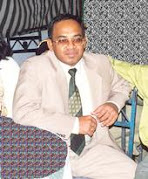













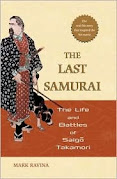


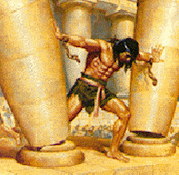









































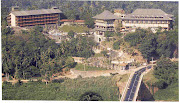








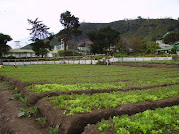














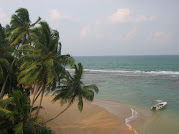












0 Comments:
Post a Comment